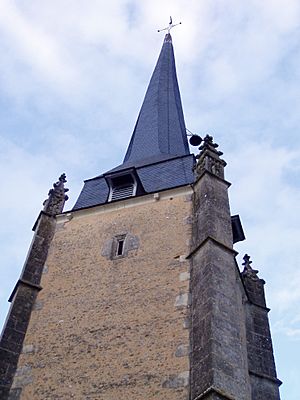Marçon facts for kids
Marçon is a small and charming commune (which is like a town or village) located in the beautiful Pays de la Loire region of western France. It's part of the Sarthe department, known for its lovely countryside.
Contents
What is a Commune?
A commune is the smallest type of local government area in France. Think of it as a town or village with its own local council and mayor. These councils help manage daily life for the people living there. They take care of things like local roads, schools, and community events. Marçon is one of many thousands of communes across France.
Where is Marçon Located?
Marçon is found in the western part of France. It's in the Pays de la Loire region, which is famous for its historic castles and beautiful rivers. Within this region, Marçon is part of the Sarthe department. The Sarthe department is named after the Sarthe River and is known for its green landscapes and agricultural areas.
Geography of Marçon
Marçon is situated in a pleasant rural area. It's often surrounded by fields, forests, and vineyards. The landscape is typical of the French countryside, with gentle hills and valleys. The presence of vineyards suggests that the soil and climate are good for growing grapes.
Marçon's Connection to Wine
One interesting fact about Marçon is that it's located in a wine region. France is famous worldwide for its wines, and many small communes play a big part in this industry. In Marçon, you might find local vineyards where grapes are grown to make wine. This means that winemaking can be an important part of the local economy and culture.
Local Economy and Life
Life in Marçon, like many French communes, often revolves around agriculture and local services. Farmers might grow crops or raise animals. The community also has small shops and services that cater to the needs of its residents. It's a place where people often know their neighbors and community spirit is strong.
History of Marçon
Like many old villages in France, Marçon likely has a long history. Many communes in the region have roots going back hundreds, or even thousands, of years. They might have started as small farming settlements or developed around a church or a castle. Over time, these small communities grew and became the communes we see today. The church steeple in the image suggests a long-standing religious and community center.
See also
 In Spanish: Marçon para niños
In Spanish: Marçon para niños


